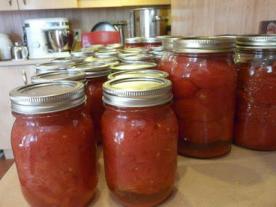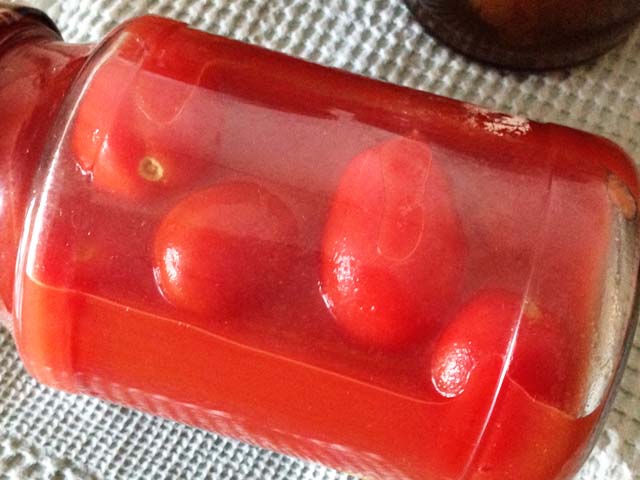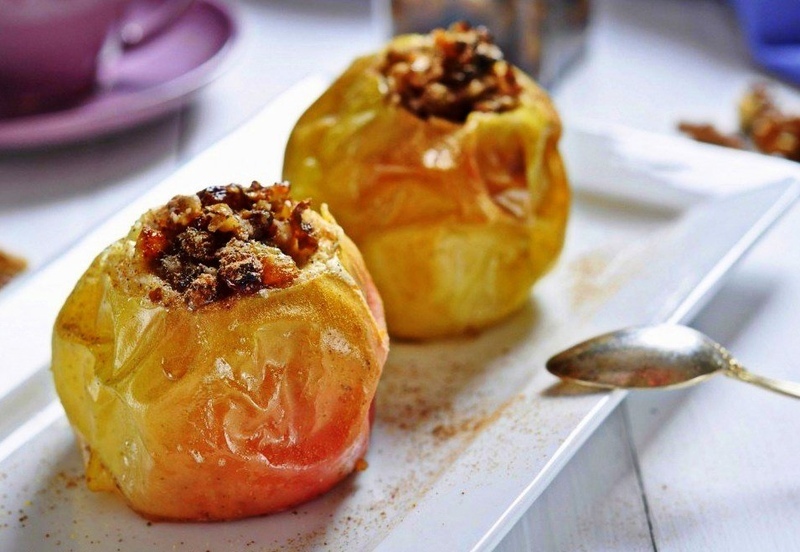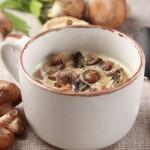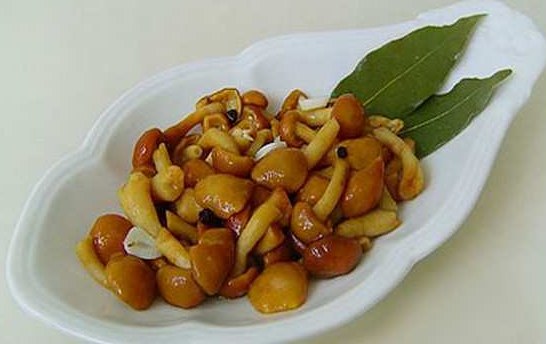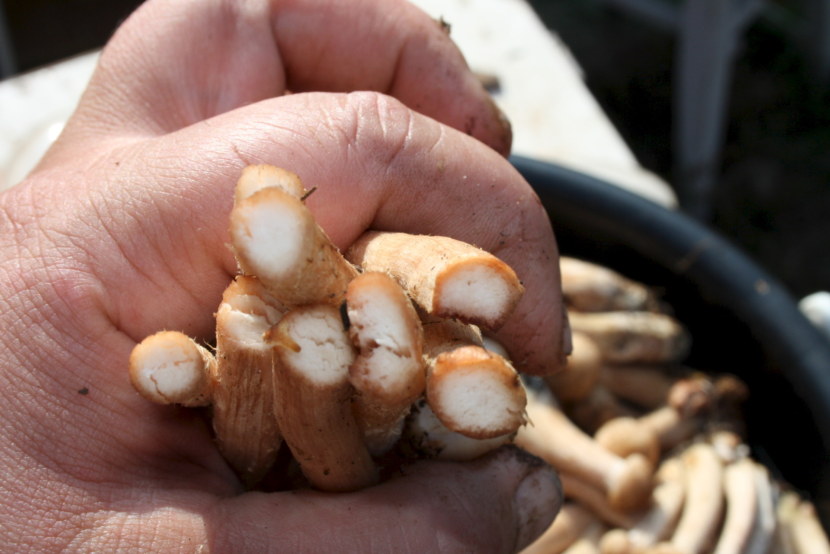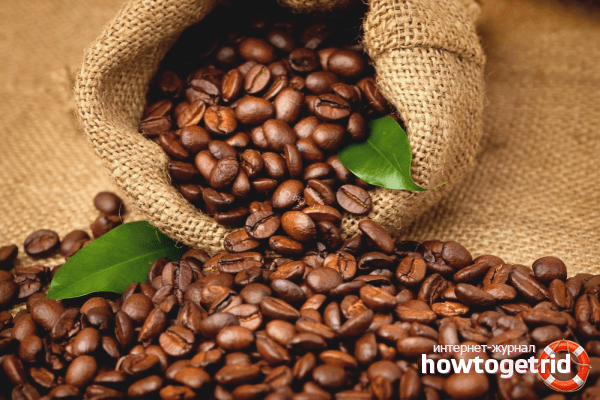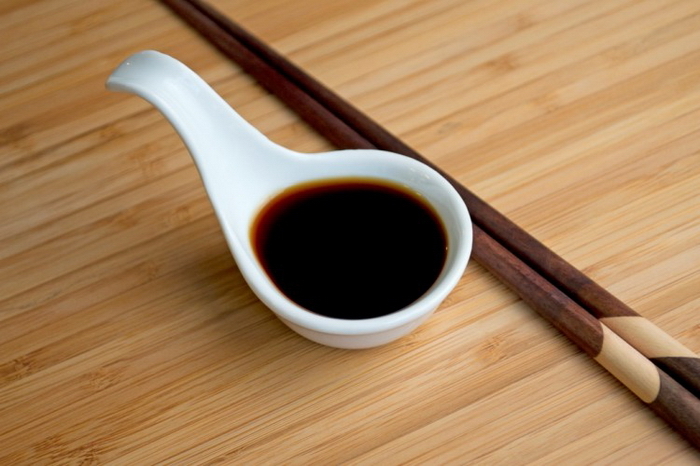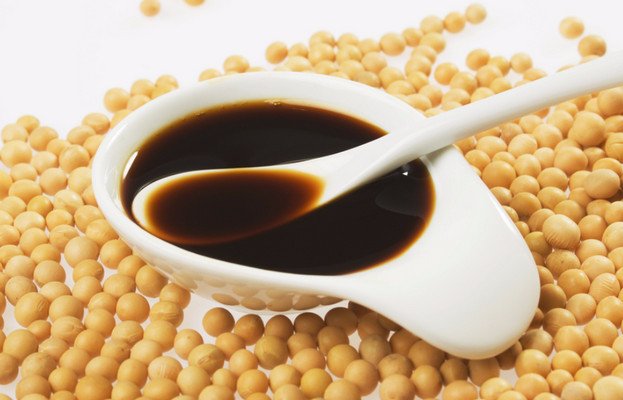How to choose butter and how to check its quality. How to choose real butter
Hello! Natural butter is a very healthy product. But how to recognize whether we are acquiring a fake? In this article I will tell you how to choose the right oil, what to look for when buying.
So, let's start exposing.
100% butter is made from natural cream - this is a fact. But how many stores in the oil? And what is the price for a completely natural product? Most of the products on our market contain various additives, sometimes not at all beneficial for health. So now, forget about the delicious sandwiches with butter?
According to a recent statement from one of the TV channels, about 60% of butter in Russia is fake! Despite this, the Russians continue to actively use it. According to Moscow City Statistics Service, the average Muscovite eats more than 2.5 kilograms of butter per year, that is, a little more than one standard package per month. And in total, Muscovites eat about 30,000 tons of oil per year!
Just imagine a big ship loaded with containers of butter ... And if all of it is of poor quality? There is a temptation to drown this load away from sin. But is it not better to figure out how to recognize a non-natural product and protect yourself from chemistry and various additives?
Let's do an experiment
 The most popular supplement is vegetable fats, including palm oil. You can conduct a simple experiment at home.
The most popular supplement is vegetable fats, including palm oil. You can conduct a simple experiment at home.
To make artificial butter, we need that same vegetable palm oil, a little bit of milk powder, an emulsifier to mix the butter with milk, a dye that will color our butter, and a flavor with the smell of natural butter.
First you need to melt the palm oil in a small saucepan and add the emulsifier. This white powder is needed so that palm fat is mixed into a single mass with diluted dried milk. The flavor will help to give the creamy taste to the fake, and the natural dye of the annatto will give the fake oil a natural yellow color. The finished mixture must be poured into molds and sent to the refrigerator.
The resulting counterfeit turns out to be so similar to butter that most ordinary users are not even able to detect a fake even after tasting!
Five signs of fakes
Vegetable fats
Indeed, on some of the packages honestly written "vegetable butter", and the composition indicates the presence of a substitute for milk fat, emulsifier and other things. Although in the 90s we ate all kinds of "margarine frames" so that our ears cracked, now many of us want to treat ourselves to natural products. Conclusion: carefully study the composition and take only oil made from natural dairy raw materials. Pay attention to the inscriptions in small letters. Your goal is to buy a product that says “oil” in black and white, and not “sandwich product” and the like.Recycling
It happens that you open the butter bought, but it is rancid. This means that it is made from recycled old oil. In this case, you can try to revive the product: put the butter in fresh milk, knead it properly, rinse with water and salt. The hostesses assure that in this way it is possible to rid the oil of an unpleasant taste and smell.Antibiotics and Preservatives
Even in good oil, there may be antibiotics and preservatives. These additives are used to increase the shelf life of products. In order not to stuff the body with chemistry, just look at the shelf life of the oil indicated on the package. Natural butter is stored for a month. If the manufacturer promises that his products may lie in the refrigerator for a year, the conclusion is obvious: it is better to stay away from such oil.Low oil price
If there are two packages of butter on a display case at a price of 50 and 150 rubles, how many of us will take the second package in a basket? Alas, most of us seek to save., But in vain. Most likely, the entire Mendeleev table is present in the composition.
Remember: natural butter made from dairy raw materials simply can not be cheap! Indeed, to get a kilogram of oil, you need to process at least twenty liters of cow's milk. They remembered how much it costs, and calculate the cost of natural butter.
Water addition
Some manufacturers sin by adding large amounts of water to milk and butter. It is easy to verify this: if you put such oil in an oiler or just on a plate, after a while a puddle of water forms under it. What to do in this case? Blacklist the manufacturer’s brand.
How to check the quality of the oil?

- Dissolve in water. If the oil is natural, it is mixed in the water evenly without sediment.
- Smell. Good butter smells like milk or cream.
- Pay attention to color. Good oil is yellowish-white without a bluish tint.
- Give it a try! You can’t confuse the taste of real butter "from under the cow" with anything!
So, now you know: to buy real butter, you need to carefully read the composition and not save on your health.
And best of all.
Bon Appetit!
What should not be in butter?
In this high-quality butter, there should be no vegetable fats. Since, by law, the composition of the product must be completely indicated on the packaging, be careful! Sometimes in folds of the wrapper, additives can be indicated in very small print: “milk fat substitute”, palm, peanut, coconut oil. In this case, the product you are holding is not natural butter, but margarine or spread. Natural butter is made exclusively from cream and whole milk.Real butter
Natural butter has a pure creamy taste of boiled milk, peasant and vologda butter let's say light nutty flavor.Oil must be plastic, it is easy to melt in air, when frozen, break into pieces. If you dip a piece of oil in hot water, it should completely melt. High-quality butter is easily spread on bread, after spending at room temperature 15−20 minutes.
Real butter has virtually no flavor of its own. If you feel a slightly sour aroma, this should alert you. Buying oil by weight, you can get a very good product, but you can run into a fake, check the source data and the composition of which you will not have any opportunity.

Butter color
High-quality butter has a light cream shade, too yellow indicates that dye has been added to its composition. GOST allows the use of a dye, for example, B-carnitine - a natural dye for oil. If on the surface of the oil you notice dark spots (especially if the oil was bought by weight), most likely, this oil is not the first freshness and you observe mold spots.Shelf life of butter up to 35 days at a temperature of 0 to +5. If the oil is frozen, it can be stored for up to 3 months.
When buying butter Check the integrity of the packaging, shelf life, composition. To hold in hands should become plastic.
Spread contains more vegetable fats, vitamins, less cholesterol, the price of the spread is lower than that of butter. The word “oil” is not written on the front side of the spread packaging - this is prohibited by law. When reading the composition, keep track of the word order: what is at the beginning prevails. For example: if the word “creamy” is in 1st place, then it contains up to 50% of milk fat. The spread always contains flavors and colorants. Using the spread, remember that vegetable fats produce more toxins when heated, it is better to use it with sandwiches.
Butter with additives

According to the Institute of Agricultural Market Studies, last year, import of butter in Russia increased by 136%! AiF decided to check which oil is better - its own, domestic, or.
For the experiment, we bought three overseas samples: French President oil, Finnish Valio and New Zealand Ankor - these are the most common “foreigners” in the dairy market in Russia. Their domestic competitors were the famous oils Vologda and Ruzskoye. We handed over all five samples to the testing laboratory “Milk” of the Research Institute of the Dairy Industry.
Trust the taste
The first test is organoleptic. This means that experts evaluated the taste and smell, as well as the consistency and appearance of the product. The ideal oil has the taste and smell of cream, it is homogeneous and plastic, pale yellow. The experts got complaints about almost all the samples (see table).
For example, New Zealand oil revealed a chemical odor and an empty taste. A similar problem with the French product is the empty taste and flavor of margarine. The smack indicates a possible spoilage of the product - it was found at Valio and Vologda.
In the laboratory, our guesses were confirmed. “The main indicator of spoilage - the acidity of the fat phase - was increased at Vologodsky’s: 5.20 with a norm of not more than 4.5, this may indicate that the production technology was violated, the oil was improperly transported and stored,” the IL explained to us. "Milk".
Inside is a surprise
■ It happens salty and unsalted (classic taste familiar from childhood). There is also “cheese” oil - it is produced from whey and is practically not sold.
Depending on the production technology, oil can be:
■ Sweet cream. Make out. Almost all domestic oil is made using this technology.
■ Sour cream. Make from fermented cream. In the West they prefer just such a product.
These oils are equally good, differ in aroma and taste.
Its fat content is also evidenced by its class:
■ Traditional (fat content of at least 82.5%). In Soviet times, these were the most common types of sweet cream butter. For example, "Vologda".
■ Amateur (fat content of at least 80%).
■ Peasant (fat content of at least 72.5%).
■ Sandwich (fat content not less than 61.5%).
■ Tea (fat content of at least 50%).
In butter of low fat content (most often it is sandwich and tea) add flavorings that give a creamy smell, stabilizers, consistency and emulsifiers. This permits GOST R 52253-2004.
Define yourself:
■ Taste: light, creamy, without a taste of chemistry or margarine.
■ Odor: pasteurized cream or sour cream (for sour cream).
■ Color: from pale yellow to yellow. Homogeneous. Good oil will not be bright yellow or orange.
■ Appearance: good oil does not crumble on the cut, it is not sticky. It melts quickly and evenly in the pan and in the mouth. Sliced \u200b\u200bon a sandwich, this butter is homogeneous, not loose and not mealy.
Each package of oil should indicate the composition, nutritional value and shelf life of the product.
* All these data must be applied to the packaging.
Butter is undeservedly avoided by some adherents of diets and weight loss, considering it a source of cholesterol and a high-fat product. However, this is a source of nutrients important for the body, necessary for its normal functioning. So how can butter be healthy and how to choose it right?
What is the use of butter?
Its main plus is the content of vitamins A, D, E, and B in it. Of the mineral substances, good butter contains calcium, potassium, phosphorus, and sodium. This product is high calorie.
Milk fat, which is part of butter, is well digested in the human body. Breakfast with a slice of butter in a bowl of porridge will provide energy and gives strength for the whole day. The use of this product in reasonable amounts helps to improve brain activity and positively affects the condition of the gastrointestinal tract, skin, nails and hair.
Now let's talk about the cholesterol contained in butter. It is produced in the human body, but its entry from the outside is also necessary. If it is not enough, there may be a malfunction in the production of hormones and biologically active substances, which can lead to dysfunctions. It should be remembered that we are talking about the rate of consumption of butter - no more than 25-30 grams per day. A greater number of it can provoke the development of atherosclerosis, diseases of the cardiovascular system and obesity.
Which butter is better to buy?

This product must be made from. First, cream is obtained from it, and then pasteurized, whipped and cooled, the ratio of the fat and water phases changes, and the consistency becomes solid. As a result, we have a valuable product - good butter.
Depending on the raw materials used, butter is sweet cream (from fresh cream) and sour cream (from cream fermented with lactic acid microorganisms).
Before choosing butter, you need to pay attention to the marking. This product is concentrated milk fat. The fat content of its main species varies from 72.5% (peasant) to 82.5% (traditional). There are also types of reduced fat content - up to 50%. The less fat in the composition, the more water or buttermilk.
The composition of natural butter includes only cream (or milk), which should be indicated on the label. Salt is present in salt oil. If other additives are indicated, then this is not a natural product, but a spread. Unscrupulous manufacturers use vegetable fats, hiding their presence in the composition.
Quality control

How to determine naturalness and how to choose a good product? The assessment of the quality of butter in laboratory conditions includes the determination of the following indicators:
Organoleptic (taste, smell, color, texture).
Physico-chemical (fat content, acidity, determination of vegetable fat content).
Microbiological (presence of mold, yeast, microorganisms of the Escherichia coli group).
Signs of Good Butter
How to choose butter in the store for ordinary consumers? To make the right choice in favor of a natural product, you need to know:
1. The color of high-quality butter varies from whitish yellow to yellow, depending on the fat content, season. It should be understood that a pronounced yellow color indicates the addition of beta-carotene (a dye permitted by GOST).
2. The consistency should be dense, uniform, ductile, moderately hard, and not too soft. On the cut surface should be shiny, but dry, without moisture. If you put a piece of oil in your mouth, it should melt evenly and quickly on the tongue. If oil is present, then the thawing of a piece in the mouth slows down.
3. A good butter should have a pronounced taste and smell of cream. A slight sour cream flavor may be present, but without extraneous chemical impurities. The bitter taste of the oil indicates the presence of mold, poor quality of raw materials or improper storage.

4. Pay attention to the packaging - it should be made of a dense, opaque material, since in the light the oil oxidizes faster. A careful study of the labeling is no less important than knowing how to distinguish natural butter when purchased. The label must indicate compliance with GOST or the Technical Regulations (CTP). And it should be called just “butter”, and not variations like “butter”, “butter” - this is an attempt to mislead the consumer who buys instead of a natural product.
There are some more nuances that help distinguish natural butter from counterfeit:
When pressed with a finger, high-quality oil will not crumble.
If a small piece of the product is put in hot water, then good butter will melt evenly. If the piece will be stratified into small components, then vegetable fat is present in its composition.
High-quality butter melting at room temperature does not emit droplets of moisture on the surface. If there is moisture, then this is most likely a spread or margarine.
Try to freeze a piece of butter in the freezer, and then take it out and cut it - good butter will break into pieces and crumble.
If you put a piece of oil on a hot pan, then a quality product will melt without foam and water.
How to store butter correctly?

After buying the oil in the briquette, it is better to free it from the packaging and put it in the oiler with a cover. It should be made of an opaque material (porcelain, ceramics) so that the oil does not oxidize. If this still happened, the yellowed edges need to be cut off. Do not use them for food.
If you bought butter by weight, you need to cut it into small pieces and place them in the freezer. The piece that is needed for use in the near future is better to wrap in parchment paper or put in an oiler.
It is customary to store butter in a refrigerator at a temperature of plus 4 - 6 degrees Celsius. The oil absorbs smells well, therefore, next to it on the shelf should not be sharply smelling products, especially fish. The grease fitting cover must be tightly closed.
The shelf life of butter depends on the conditions. At room temperature, it can lie for several days without signs of spoilage. In the refrigerator, the shelf life of butter is increased to 3 months, and in the freezer at a temperature of minus 25 degrees Celsius - up to 2 years.
How good morning can be if you have a delicious sandwich for breakfast. But are you sure that all its components really passed all the tests in accordance with GOST? For example, how to distinguish real butter from a fake, what should be the fat content and why is Vologda considered natural? Learn all the secrets of how to distinguish a quality product from a wide range in Russian stores.
What butter is made of
There is only one recipe that does not change over time. The composition of butter according to GOST has nothing but cream. No milk fats, plant-based ingredients (palm oil) like coconut oil. If you see additional ingredients on a pack in the “composition” column, then this is an unnatural product. It can be eaten, however, you will not receive any useful nutrients for the body. In addition, the taste is significantly different from natural.
Production technology
From ancient times, good butter was obtained by whipping cream. Today, the technology remains unchanged, however, other tools have been used for this: in the whipping factories there are special apparatuses that cope with large volumes of production. For cooking at home, you need the fat of cow's milk or, in another way, cream and a teaspoon of yogurt. The components are mixed. The mixture is infused for 12 hours, and then using a mixer is whipped. The liquid separates, and you get a product that you can immediately eat.
GOST for butter
The quality of butter in Russia can be determined according to GOST R 52969-2008. However, do not think that this criterion alone can be a guarantee of quality. Margarine or spread is also made in accordance with GOST, so look carefully at the numbers. P 52253-2004 indicates that you have in your hands the Vologda product, which in the Vologda Oblast is produced by only 3 plants. How to distinguish real butter from fakes? Learn GOSTs and navigate them.
GOST margarine - P 52178-2003. Some types are made not according to GOST, but according to TU - technical conditions, so you should pay attention to the composition, which was written above. In addition, the package should not say “sandwich product”, “spread” and so on. Otherwise, you risk acquiring a fake, the price of which is not always lower than a quality product.
The best varieties
When buying, it is not necessary to focus on the packaging alone, which is advertised, however, such products are not always bad. Take the pack in your hands and familiarize yourself with the composition: it should not contain anything except milk and cream. It cannot be cheap, so pay attention to varieties whose price is above average. One of the best is Vologda, but dishonest manufacturers can safely name their product in the same way, for example, in Moscow.
How to check the quality of butter
There are several criteria by which you can quickly navigate and understand what lies in front of you and whether it is worth buying. Even if you made a mistake and bought a low-quality one, feel free to use it for baking, and for the future just remember which manufacturer has not paid off. You can determine the quality by color, taste, fat content, as well as the expiration dates that are stated on the package. However, there are other criteria:
- Should not crumble during slicing.
- A quality product has a pleasant milky smell.
- The authenticity of the cream product is confirmed by a uniform, dense spreading on the bread.
- Delicate milky color, without pronounced yellowness.
Color
If you come to the market where the product is sold by weight, then you have the opportunity to see it without packaging. By color, you can easily understand what you are offered. A natural product is not very yellow in color, and, conversely, intensely white. High-quality butter should be a gentle milky hue without plaque or yellowed, windy edges, otherwise it may be spoiled.

Taste
Traditional butter made using natural cream does not have a pronounced taste, rather a pleasant milky aftertaste. The mouth should melt evenly, and not break into small pieces, otherwise you eat margarine. After consuming a non-natural product, the mouth seems to envelop the inside with vegetable fat. This should not happen with a good product.
Fat
When choosing oil, be sure to pay attention to the indicated fat content. A good product should be 82.5% fat, sometimes found from 78%, but very rarely. All other options indicating 72.5% fat content can be safely skipped, because natural oil cannot be like that. This is either margarine or spread, and both of them will differ in taste and nutrition. A low-fat product will melt faster and droplets will appear on the surface.
Shelf life
When choosing butter from the presented assortment, do not forget to look at the expiration date. Although many are used to storing this product in the freezer and rarely pay attention to the date of manufacture, there is still a risk of acquiring expired goods. It is stored from 10 to 20 days depending on the packaging (paper or foil), and in the freezer it can lie as much as you like.

How to choose butter
Knowing these criteria, you will no longer think about which butter is better to buy, and therefore do not confuse a quality product with a fake. Here are all the important properties by which you can understand how to distinguish real butter from low-quality:
- Price. natural butter can not be very cheap, often the price starts from 80 rubles. and higher.
- Fat content. Must be from 78% and above. On shelves in stores they sell a product with 72.5% and 82.5% fat content. The second option is yours.
- Color. Must be gently milky.
- Smell. The natural product has a pleasant creamy aroma.
- Shelf life. Not more than 20 days.
